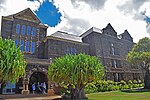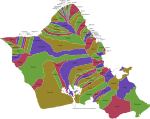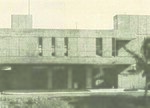Hawaii Sports Hall of Fame
The Hawaii Sports Hall of Fame is a sports hall of fame and museum in the U.S. state of Hawaii. According to the hall's official website, it servers as the "state museum for sports history in the islands," and "is best described as an educational repository created to enshrine athletes, pioneers and contributors of Hawai'i's rich sports history." The organization was founded in 1997 and a selection committee meets once a year in December. The flagship exhibition for the hall is located in the Bishop Museum in Honolulu. The 2016 class, inducted in May 2016, included water polo player Brandon Brooks, decathlete Bryan Clay, soccer player Brian Ching, and brothers Ma'ake Kemoeatu and Chris Kemoeatu for American football.
Excerpt from the Wikipedia article Hawaii Sports Hall of Fame (License: CC BY-SA 3.0, Authors).Hawaii Sports Hall of Fame
Lunalilo Freeway, Honolulu Kalihi
Geographical coordinates (GPS) Address Nearby Places Show on map
Geographical coordinates (GPS)
| Latitude | Longitude |
|---|---|
| N 21.3329195 ° | E -157.8728014 ° |
Address
Lunalilo Freeway
Lunalilo Freeway
96858 Honolulu, Kalihi
Hawaii, United States
Open on Google Maps




